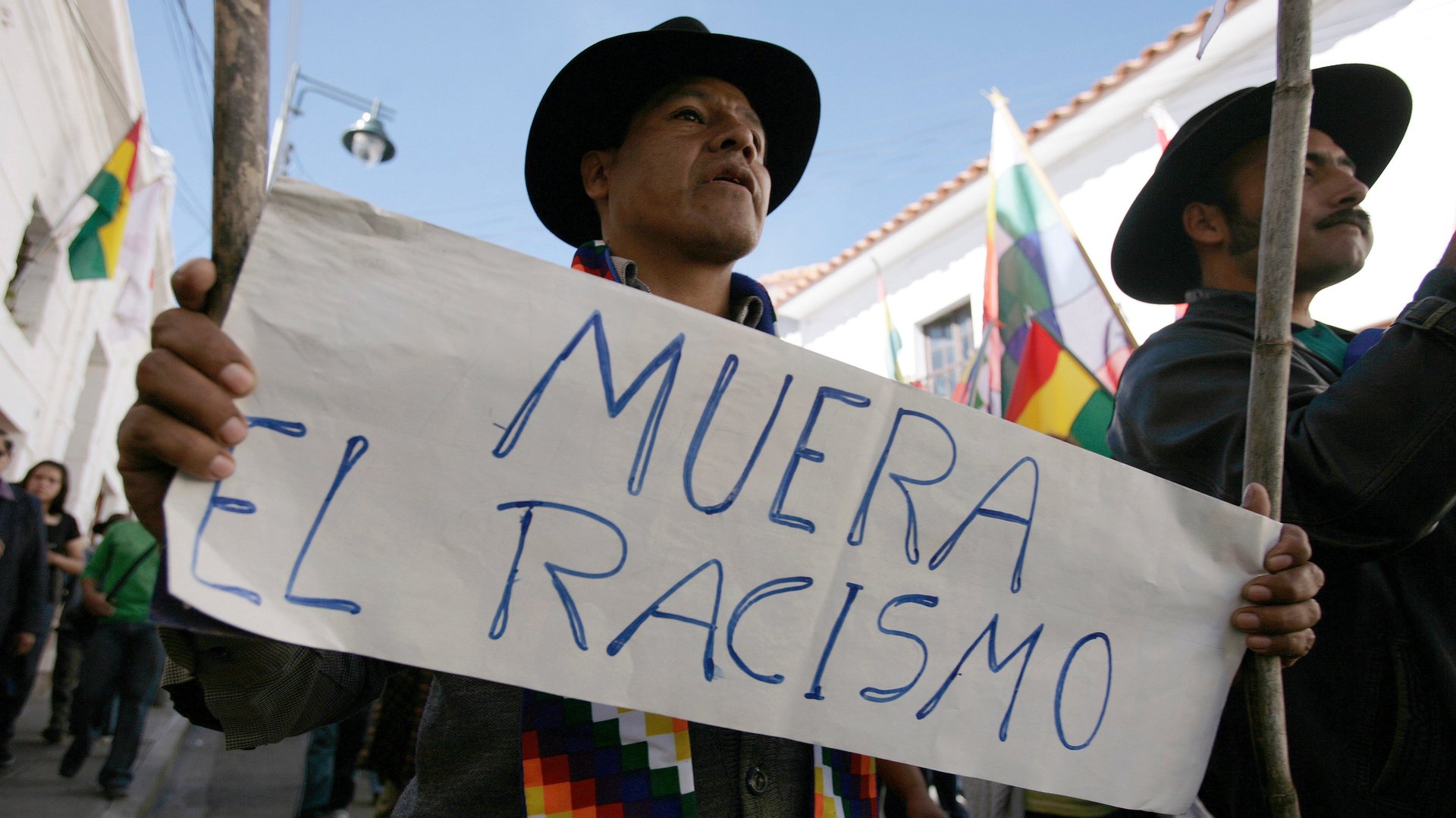Latin America’s economic boom left behind those who’ve been there the longest
Latin America experienced spectacular economic growth over the last decade. More than 70 million people were raised out of poverty.


Latin America experienced spectacular economic growth over the last decade. More than 70 million people were raised out of poverty.
A new report from the World Bank looks at how the benefits of that boom have been distributed among indigenous and non-indigenous groups (pdf). The findings show that over the decade almost everyone saw their situation improve. However, in a discovery that will shock no one, indigenous groups continue to lag behind others.
The following chart shows how things stood near the beginning of the millennium. (The exact survey year varies from country to country.)
Note the large gap between the poverty rates for indigenous and non-indigenous people. A decade later, despite declining poverty overall, only Chile significantly narrowed that gap. In Bolivia and Brazil the gap actually got worse.
Even more striking, when the World Bank controlled its analysis for education, age, gender, family size, location, and occupation those factors failed to explain more than than 40% of the difference between groups. That indicates that if an indigenous person and non-indigenous person are in virtually identical life situations, the indigenous person will be measurably less likely to escape poverty.
The data show similar gaps in education, use of technology, and access to basic services like piped water. Unfortunately, for most of these issues there was insufficient information to track progress across the decade. In fact, reports such as this one are uncommon precisely because indigenous people are rarely well-identified in household surveys.
The World Bank stops short of ascribing the cause of the gap to prejudice against indigenous people. In a blog post, poverty expert Oscar Calvo-González says, “These results suggest that Indigenous Peoples face specific challenges in benefiting from growth and getting out of poverty.” However, it’s impossible not to see the research and think the oldest cultures in Latin America are simply stuck with the consequences of racism that has been there for 500 years.